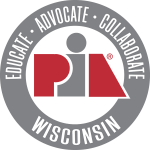Double Down on Documentation

By Mary LaPorte, AINS, CPCU, CIC, LIC, CPIA
Agent’s questions about Errors and Omissions, and how E&O losses can be prevented.
Q:
Due to COVID-19, many of our account managers are still working from home. I am a personal lines manager, and responsible for a team of seven account managers. Although we have always tried to instill E&O awareness in our employees, I’m concerned that our exposure may be heightened at this time. Can you suggest any areas where we need to be especially careful?
Cora, Texas
A:
Cora, welcome to the new “normal.” I am sure you are finding that many of your workers may be reluctant to come back into the office even as restrictions a being relaxed. You may need to continue your work-from-home protocols well into the future, since these concerns could be here to stay.
One of an agency’s best defenses in an E&O situation has always been their documentation record. This has not changed, but as litigation ramps up due to the pandemic, agencies who have strong documentation standards will be better equipped to defend any allegation.
Documentation should be maintained in your agency management system under “activities” or “notes” which are tied to a customer’s digital account record. Documentation for a particular customer should capture and summarize everything that has transpired on that account. To provide strong evidence in an E&O situation, it should be entered as soon as possible after an event takes place, by the party involved in that event. An “event” can include any service that was performed or any communication that took place related to that specific account.
Most remote workers can access the agency’s management system and easily enter documentation when performing sales or service activities. Some employees find that their home environment has fewer distractions than when working in the office. Others may be faced with situations which occasionally disrupt concentration or cause distractions. It is understandable that when hanging up from a customer call, someone would first address a barking dog or crying child before returning to their workstation. The challenge then is to create a fool-proof system or discipline to assure that any workflow started is followed to its conclusion. This is a good topic to discuss with your employees at one of your remote team meetings and encourage them to brainstorm solutions.
Another reason that documentation is important at this time is because of the increased number of coverage inquiries or claims related to the pandemic. Even if you feel that the policy does not provide coverage for a situation, do not discourage the customer from making a claim. Allow the carrier to do their job and handle all coverage issues. If the customer is not making a claim, but simply making an inquiry about their policy, include sufficient detail in the documentation. Summarize any explanations made and describe how the conversation was concluded.
It is clear that the COVID-19 pandemic is impacting agencies exposure to E&O. All employees should be aware of the critical role documentation plays in protecting your agency.
Mary LaPorte is a consultant and educator with a strong background in Errors & Omissions loss prevention. Forward your E&O questions to marylp@lpinsuranceconsult.com.
